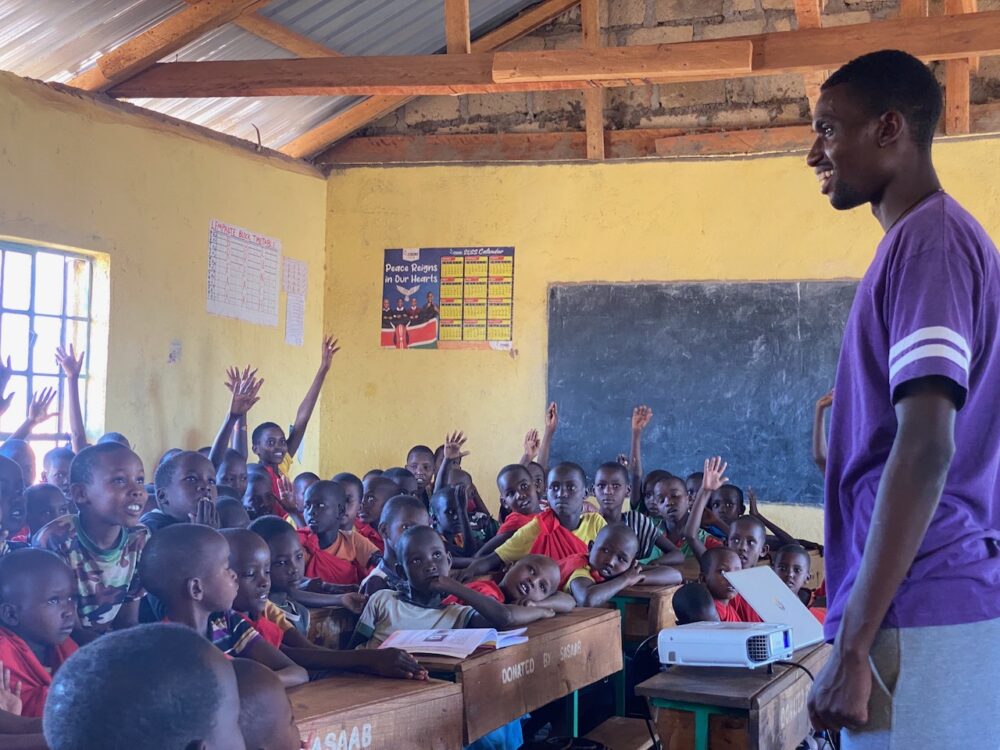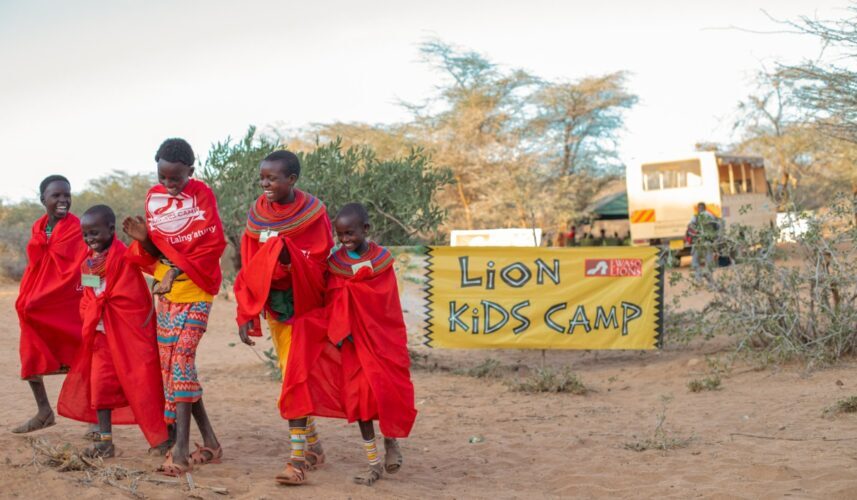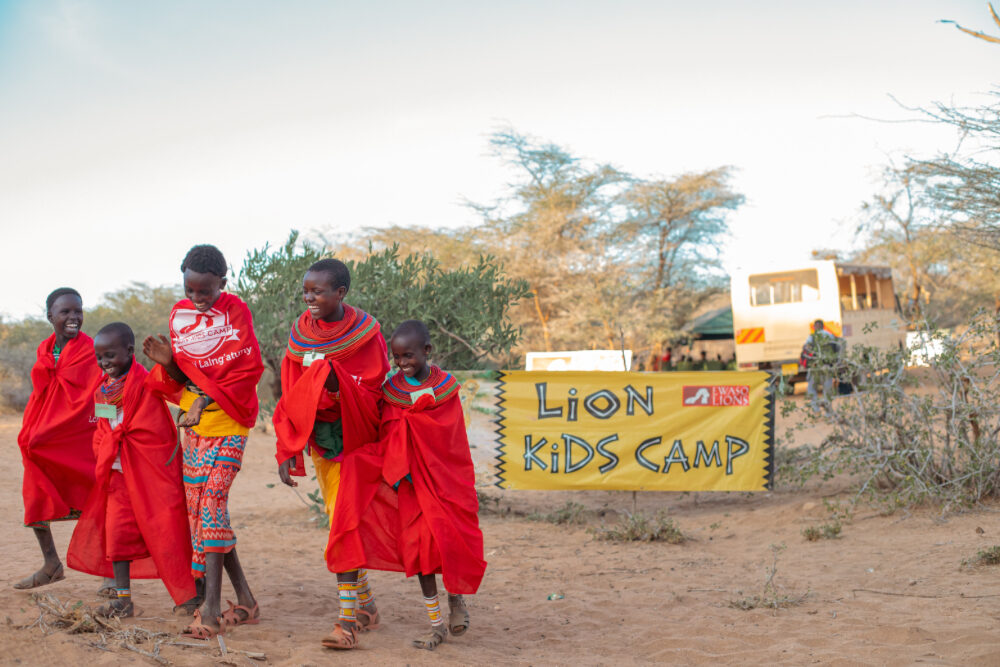We have just concluded our first ever Lion Kids Camp for livestock herding children. Our previous five Lion Kids Camps were all with local primary school students. For this Camp, we wanted to focus on a new demographic of young Kenyans who play an important role for wildlife: young livestock herders, or “lchokutis” in the local Samburu language. Last week, we brought together 28 Kenyan children from villages across Westgate Conservancy for a week of conservation education, activities, and games.
For the Samburu people in northern Kenya, livestock represents wealth and status. Often, young children are charged with tending livestock whilst out grazing, so these young herders play a vital role in protecting their families’ livelihoods and maintaining cultural traditions. They spend a significant amount of time in wildlife areas, yet they have limited, if any, exposure to conservation education and training.
Because of their herding responsibilities, most have never even stepped foot in a classroom before!
Above: video highlights from the Lion Kids Camp.
It may not seem like it, but these young herders can have an immediate impact on wildlife – from where they take their goats to graze to their tolerance and interaction with wild animals. In addition, the young male herders will grow up to become warriors, so it is key to foster a positive conservation ethic at an early age. For these reasons, we felt it was time they too were engaged in conservation through our Lion Kids Camps.
We took the herders on their first-ever game drive where they were lucky enough to see three of Samburu’s famous lionesses hunting warthog. For 22 of the 28 herders this was the first time in their lives they had seen lions!
Despite living adjacent to world famous reserves and spending each day in the bush herding livestock, it is rare for young herders to see wildlife close up, especially carnivores. Instead, they might see the tracks of a hyaena outside their home or the remains of a goat killed by a leopard. Perhaps even more exciting, the herders saw Naramat and her three cubs in Westgate’s own Conservation Area. At the end of the camp, it was great to hear them still reciting the names of their community lions!
The lchokutis really soaked in everything they learned: local conservation issues, ways to coexist with wildlife, and more. They were so honest about everything – admitting to having encroached into protected areas, killing dikdiks in the past, and more. But after the Kids Camp, we could see a change. On the way home, a black-bellied bustard crossed the road in the distance and Fredi, one of the boys yelled out, “Don’t hit him!”
The camp concluded with a special closing ceremony in which the herders created and performed their first wildlife dramas. With the help of their team leaders, they also made some great wildlife costumes out of old food sacks, ash and scraps of material!
On Friday, after some impromptu Samburu dancing, the children returned to their villages singing songs about wild dogs and lions. Incredibly, the shy and nervous children who had arrived barely five days earlier had transformed into confident children eager to share their experiences with family and friends. They were even demanding to be dropped right outside each village so that everyone could hear them singing!
We are thankful to the children for opening their minds and hearts to learn about conservation and are already excited by plans to host another Lion Kids Camp with herders very soon.
***********
Ewaso Lions would like to thank the following individuals and organisations for supporting this camp:
• Westgate Community Conservancy staff and management for hosting the camp.
• Samburu National Reserve for hosting our kids in the park.
• Micato Safaris for providing us with two of their vehicles for the duration of the camp. Our thanks, in particular, are extended to Micato drivers Wesley Korir and Peter Wambugu.
• Grevy’s Zebra Trust for teaching the kids about Grevy’s zebra conservation.
• Daniel Letoiye for hosting a special session with the children on holistic management.




